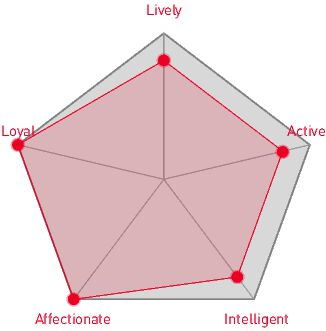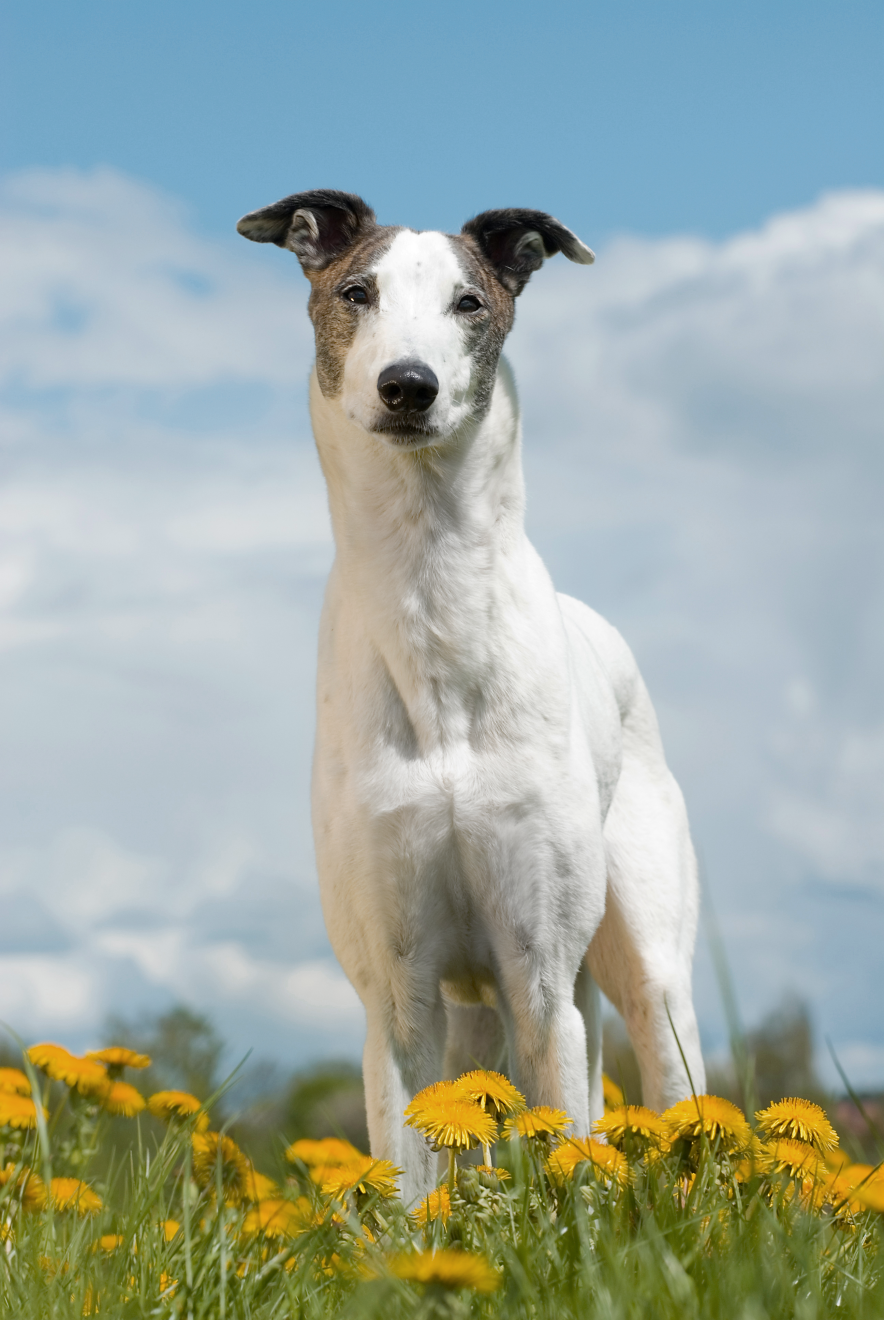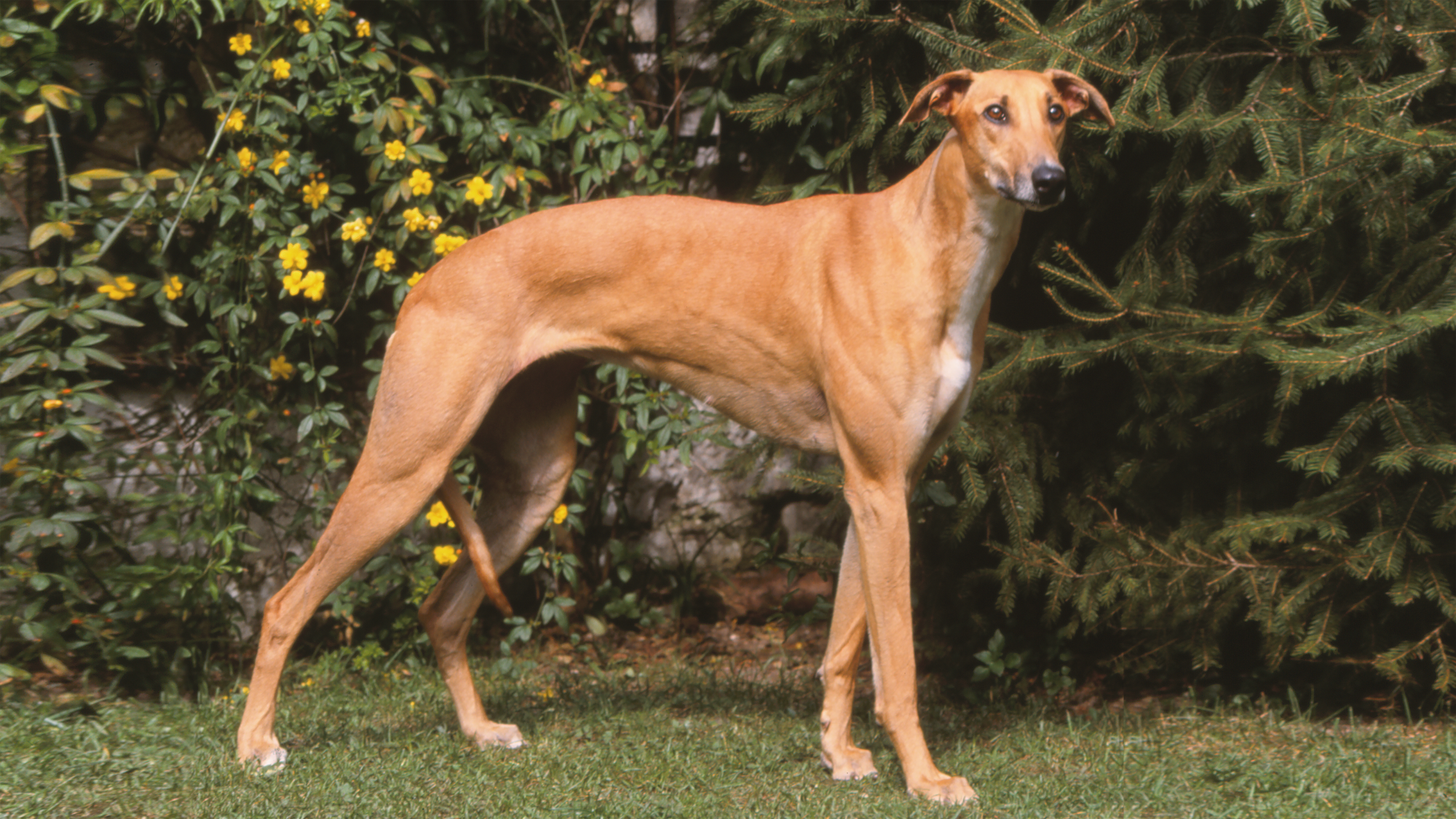
Let's talk Magyar Agars
Intelligent, affectionate, easy to train, laid back yet blessed with a near endless supply of stamina – this elegant breed has many winning qualities. Highly adaptable, a Magyar Agar can fit in well with most families once trained, including those with children, elderly people and other dogs – or one composed of a passionate racing fan. ‘Agar’ means wind hound or gaze hound in Hungarian, so it can see and run far and fast. Keep that in mind if letting your Magyar Agar off lead. Calm and patient, not big barkers, nor aggressive, their protective nature makes them vigilant watchdogs.Official name: Magyar Agar
Other names: Hungarian Agar, Hungarian Greyhound
Origins: Hungary

| Drooling tendencies: |
|
Warm weather? |  |
| Shedding level: |  |
Suited to apartment living? |  |
| Physical activity needs (high, low, medium): | Moderate | Kid-friendly? |
|
| Compatibility with other pets: | Can stay alone? | 
|
We advise against leaving pets alone for long stretches.
Companionship can prevent emotional distress and destructive behaviour.
Speak to your veterinarian for recommendations.


| Baby age | Birth to 2 months |
| Puppy age | 2 to 15 months |
| Adult age | 15 months to 5 years |
| Mature age | 5-8 years |
| Senior age |
from 8 years |
1/7
Get to know the Magyar Agar
All you need to know about the breedA rare dog more commonly found in Europe, the Magyar Agar can be a bit reserved at first but is without a doubt one of the most affable and affectionate breeds around. They're easily socialised at an early age if exposed to a wide variety of people and places, too. While these dogs form very close ties with their human families, they're not prone to separation anxiety, so can be left on their own for a while without worry, though we don’t advise leaving any dog alone for long stretches.
However, if you're looking for a dog that's content with a quick walk around the block a few times a day, this is not the dog for you. True, left to their own devices Magyar Agars can spend most of the day sleeping next to you on the couch (if they are allowed), but they need both physical and mental stimulation to prevent boredom – which, in turn, can lead to destructive behaviour. This breed doesn’t hold much interest in chasing balls and taking part in playtime. Instead make sure they get plenty of long, brisk walks – or, even better, take them along on your run or bike ride. They are able to run 30-50km – 20 to 30 miles - in a day. If you want these sighthounds to excel, then have them involved in dog sports such as lure coursing, racing, agility and competitive obedience.
2/7
2 facts about Magyar Agars
1. Spot the difference
Though often referred to as the Hungarian Greyhound, the Magyar Agar is stouter, has a longer body and tail, thicker skin and heavier bones than the Greyhound. The head is more wedge-shaped and the length of the muzzle is about half the length of the head.
2. Different stripes for different dogs
These dogs won't be pinned down, looks-wise. All sighthound colours and colour combinations are permitted, except blue, blue-white, brown, wolf, grey, black and tan – and tricolour. The patterns range from solid, brindle, ticked, dots and patched – they may even be striped like a tiger.
History of the breed
The earliest examples of Magyar Agars can be traced all the way back to the 10th century Carpathian Mountains in countries bordering Hungary. Owned by both peasants and nobility, these dogs were used to hunt by sight instead of scent.
Community ownership existed in areas of Hungary where true socialism existed. The Magyar Agars would simply roam the street and, when a family needed them, they'd be taken into the field to help procure the meal of the day, before being returned back to the street.
In order to improve the speed of the breed, Greyhound bloodlines were introduced in the 1800s, and these are the dogs that remain today. Though not yet recognised by the American Kennel Club, the breed is acknowledged by the Fédération Cynologique Internationale, the American Rare Breed Association, and the United Kennel Club recognised the breed in 2006.

4/7
From head to tail
Physical characteristics of Magyar Agars
1. Head
Wedge-shaped head, long muzzle, dark eyes.
2. Body
Muscular neck, strong bone structure, deep chest.
3. Coat
Short, dense coarse and smooth coat in a wide variety of colours and combinations.

5/7
Things to look out for
From specific breed traits to a general health overview, here are some interesting facts about your Magyar Agar

6/7
Caring for your Magyar Agar
Grooming, training and exercise tips
The Magyar Agar's short, dense coat requires very little maintenance. For most of the year, a weekly brush will be enough. However, during the winter, when they develop an undercoat, you may want to increase the frequency. While normally low shedders, Magyar Agars do shed more heavily twice a year. On the upside, the undercoat means they can tolerate lower temperatures better than some other short-coated sighthounds. Check ears for debris, brush teeth often – ideally daily if you can – to avoid dental problems and trim nails regularly. They only need to visit a grooming salon twice yearly. Your Magyar Agar could easily put on weight if you don't pay attention. So while they're suitable dogs for elderly owners, they require an owner with a fairly active lifestyle who is willing to take them for multiple walks, spending upwards of an hour a day exercising them. Though they can't accelerate as fast as their Greyhound relations, Magyar Agars are capable of high speeds, have more endurance and are able to run further without getting tired.7/7
All about Magyar Agars
This breed is anything but aggressive – they're calm, gentle, affectionate and slightly reserved around strangers. They will bark to alert you to anyone new, but that’s about it.
This is not a hypoallergenic breed. They have a dense winter coat and shed significantly twice a year, though more slightly in between.
translations.feature.breeds.otherbreeds
Read more on this topic

How your dog's nutrition needs change with age

How to adopt a dog

Things to consider before getting a dog
Sources
1 - Veterinary Centers of America https://vcahospitals.com/
2 - Royal Canin Dog Encyclopaedia. Ed 2010 and 2020
3 - Banfield Pet Hospital https://www.banfield.com/
4 - Royal Canin BHN Product Book
5 - American Kennel Club https://www.akc.org/


